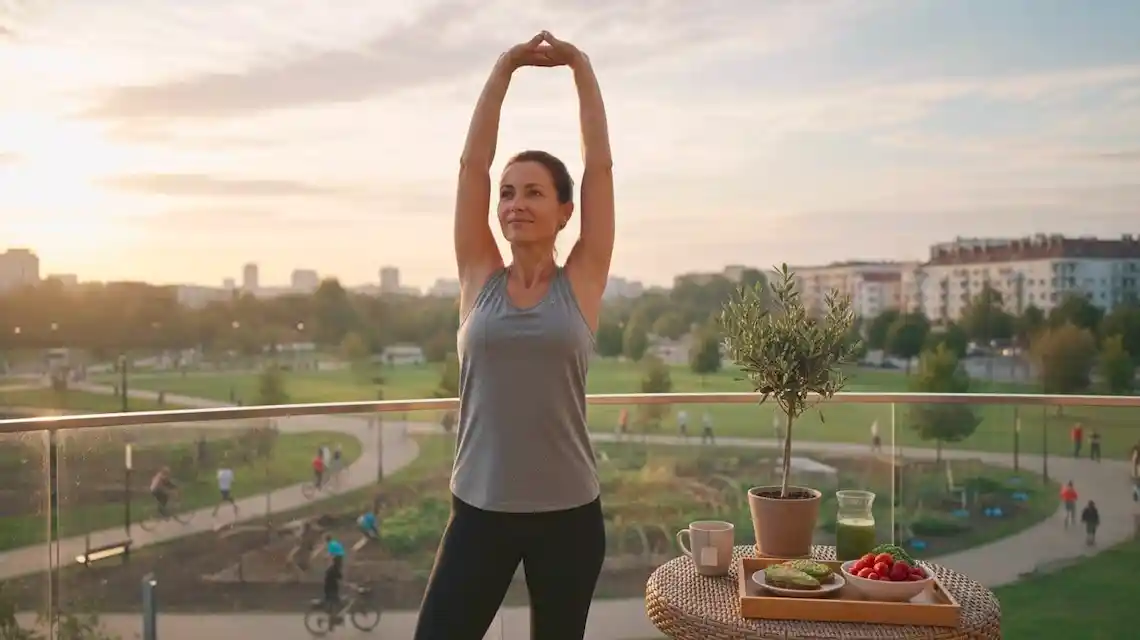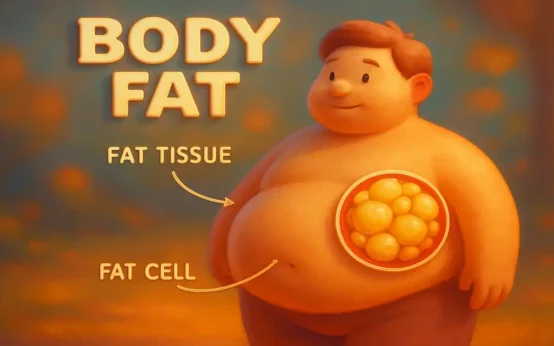Feeling flat, stuck, or heavy is hard. You might be asking, do lifestyle changes help depression? The short answer is yes, for many people with mild to moderate symptoms, lifestyle changes can ease depression. They are not a cure, and they do not replace medical care. Think of them as steady supports: movement, sleep, food, social connection, sunlight, and routine.
Results take time. Most people need a few weeks, not days, to feel a shift. Small, consistent steps often help more than a big push. If symptoms are severe, or if you feel unsafe, seek help right away.
This guide shows what the research says, which habits help most, and how to start with a simple two week plan. You will learn how to keep going on hard days, when to bring in therapy or medicine, and how to adjust your plan over time. The tone here is hopeful and realistic, because you deserve both.
Do lifestyle changes help depression? What the science says
Research supports a clear answer. Healthy lifestyle habits can reduce depressive symptoms, especially for mild to moderate depression. They work best when you combine them and when you use them along with therapy or medication if needed. No single habit solves everything, but together they can lift your baseline and make other treatments work better.
Exercise and mood: how moving your body can lift symptoms
Regular movement helps many people feel less down and more in control. Brisk walking, cycling, or similar activity 3 to 5 times a week is a strong target. Try 30 minutes most days, or two 15 minute walks. Strength training helps too. Even small wins count. If energy is low, start with 5 to 10 minutes. Build up slowly, and celebrate consistency over speed.
Sleep and routine: why a steady schedule matters for your brain
A stable sleep routine supports mood and energy. Aim for 7 to 9 hours for most adults, with the same wake time each day. Get morning light within an hour of waking. Create a wind down routine at night and keep the bed for sleep only. Limit long naps. Medium steps like dimming lights and cooling your room make sleep easier.
Food and the gut brain link: simple swaps that support mood
Food affects how you feel. Go for more plants, fiber, and whole foods. Include protein at each meal, plus healthy fats like olive oil, nuts, and seeds. Cut back on ultra processed foods and heavy drinking. Keep meals steady to avoid big blood sugar swings. Use a simple plate: half veggies, a quarter protein, a quarter whole grains. Keep water nearby.
Social connection and nature time: small steps that count
Even brief contact helps the mind. Send a text, join a small group, or say hello to a neighbor. Add a 10 minute walk in a green space when you can. Sunlight and nature can calm stress and lift mood. Start with low pressure plans, like a friend date on a walk, or sitting by a sunny window while you read.
A quick safety note for this section: if you have thoughts of harming yourself or feel you cannot keep yourself safe, contact a clinician or crisis line now. Help is there for you.
The best lifestyle changes to try first: a simple plan that fits real life
You do not need a perfect plan. You need a doable plan. Start with a two week trial that picks one habit from each area: movement, sleep, food, and connection. Keep steps small and specific. Think in minutes, not hours. Fit changes into your day at times you already do other things.
Use mornings for light and a short movement burst. Lunch breaks for a walk or a balanced meal. Evenings for wind down time. If you are busy or low on energy, keep options short and flexible. If you are already active, add structure or another rest day to recover well. The goal is to build wins you can repeat.
Your 2 week starter plan: tiny habits that add up
Here is a simple schedule you can copy:
- Morning: 5 minutes of sunlight or bright light by a window. Stretch for 2 minutes.
- Midday: 10 minute walk after lunch, or 20 bodyweight squats at your desk.
- Evening: phone off 30 minutes before bed, read or listen to calm music.
At day 7, and again at day 14, check your sleep, energy, and mood. Look for small gains like less afternoon slump, fewer wake ups, or a brighter morning.
Build your anchor routine: wake, light, move, meals, sleep
An anchor routine sets your daily rhythm. Pick a fixed wake time, get morning light, and add a short movement block. Eat regular meals, then wind down at a set time.
Sample day: Wake 7:00, light and stretch 7:05, breakfast with protein 7:30, 10 minute walk at lunch, balanced dinner at 6:30, screens off at 9:30, light read, in bed at 10:00.
Screens, caffeine, and alcohol: set simple limits that help mood
Keep caffeine to mornings, and cut it 8 hours before bed. Avoid screens in the last 30 to 60 minutes of the day. If you drink alcohol, keep it light and not daily. These limits improve sleep depth and next day mood. Swaps help: herbal tea instead of a nightcap, a paperback or a podcast instead of scrolling.
Low cost options: free or cheap ways to get started today
Use what you have. Try bodyweight workouts, like squats, wall pushups, and planks. Borrow cookbooks from the library and plan simple meals. Walk your neighborhood or a nearby park. Join free online support groups or forums. Sit by a sunny window for morning light. Check community centers for low cost classes or social hours.
Make it stick: motivation, tracking, and handling setbacks
Change is easier when you build the path around you. Focus on identity and environment, not willpower. Set small, kind goals and track a few key signals. Plan for hard days in advance, so you are not starting from zero. Support from friends or apps can keep you going when energy dips.
Set kind SMART goals and track what matters
SMART means specific, measurable, achievable, relevant, and time bound. Example exercise goal: walk 10 minutes after lunch, 5 days this week. Example sleep goal: in bed by 10:30 on weeknights for two weeks. Track two or three signals: mood (rate 1 to 5), sleep hours, movement minutes. Review once a week.
Habit stacking and friction: make the next step easy
Attach a new habit to one you already do. Stretch after brushing your teeth. Do five squats after you start the coffee maker. Reduce friction. Lay out shoes the night before, fill a water bottle, prep snacks. Keep steps so small they are hard to skip.
Bad days plan: what to do when you do not feel like it
Make a fallback rule. Do the 1 minute version. If you cannot walk 10 minutes, walk to the mailbox. Keep a short menu: step outside for 3 minutes, text one friend, eat a protein snack, take a warm shower. Any step counts. Rest is part of healing, not failure.
Support systems: buddies, groups, and digital tools
Tell one person your plan and ask them to check in. Join a walking group, a class, or a peer support meeting. Simple apps can track habits or mood with one tap. Sharing goals raises follow through. If you prefer privacy, use a paper checklist on the fridge.
When lifestyle changes are not enough: blend habits with professional care
Some people need therapy, medication, or both. That is normal. Lifestyle changes can boost results, reduce side effects, and lower relapse risk. They can make therapy skills easier to practice and help medication work better by improving sleep and energy.
If symptoms are severe, or if you have not seen change after a few weeks, bring in a clinician. Share your plan and your tracking notes. A combined approach often works best for moderate to severe depression.
Red flags that call for a clinician now
Get help right away if you have thoughts of self harm, a plan to hurt yourself, or feel you cannot stay safe. Other urgent signs include not eating or sleeping for days, not being able to work or care for yourself, new confusion, or substance misuse. Contact a doctor, therapist, or local crisis line now. You are not alone.
How therapy and medicine work with lifestyle changes
Therapy teaches skills to manage thoughts, habits, and relationships. Medicine can lift symptoms enough to help you use those skills. Doctors often recommend combining both for moderate to severe depression. Share your sleep, exercise, and food plan with your clinician so they can tailor care to you.
Special cases: teens, pregnancy, and chronic illness
Teens benefit from family support, school routines, and steady sleep. For pregnancy or postpartum, get medical guidance before starting or changing habits. Focus on gentle movement and safe nutrition. For chronic illness, use short, gentle sessions and pacing. Always check changes with your clinician to fit your health needs.
Your 4 week check in: review, adjust, and keep what works
Look back at the last month. Keep habits that helped, adjust those that did not, and add one new small step for the next week. If symptoms have not improved, or got worse, schedule a follow up with a clinician. Progress is often steady, not dramatic.
Conclusion
So, do lifestyle changes help depression? For many people with mild to moderate symptoms, yes. Movement, sleep, steady meals, social connection, sunlight, and routine can ease low mood and build resilience. Small steps add up, especially when you combine them and stick with them for several weeks.
Pick one tiny change today. Step outside for 5 minutes, or send one text to a friend. Keep it simple. If your symptoms feel severe or unsafe, reach out for help right now. You deserve care that fits your life and a plan that gives you hope.
Related post: Exercise to Deal With Depression
FAQ: Do Lifestyle Changes Help Depression?
Can lifestyle changes really help depression?
Yes, they can ease symptoms for many people, especially with mild to moderate depression. They work best with therapy or medication, not as a full replacement for care. Small, steady habits can lift mood, improve energy, and reduce relapse risk.
How much exercise helps, and what kind?
Aim for 150 minutes of moderate activity per week, like brisk walking, cycling, or swimming. Strength training 2 days per week adds benefits. If that feels like a lot, start with 10 to 15 minutes a day and build up. Consistency beats intensity.
What should I eat to support my mood?
A Mediterranean-style pattern helps. Think vegetables, fruit, whole grains, beans, nuts, olive oil, fish, and yogurt. Cut back on ultra-processed foods, added sugar, and heavy alcohol. Stay hydrated. If you rarely eat fish, ask your clinician about omega-3s with EPA.
Does sleep really make a difference?
Yes. Keep a regular sleep and wake time, even on weekends. Aim for 7 to 9 hours. Reduce screens and bright light in the hour before bed. Avoid caffeine late in the day and heavy meals at night. If you snore loudly or wake unrefreshed, ask about sleep apnea.
What about alcohol or cannabis?
Both can worsen mood and sleep, and they raise relapse risk. If you drink, set a limit and track it. If you use cannabis for sleep or anxiety, talk with your clinician about safer options. Seek help if cutting back is hard.
Can sunlight or vitamin D help?
Daylight helps set your body clock. Get morning light for 15 to 30 minutes if you can. For winter or seasonal depression, bright light therapy may help. Check with your clinician first if you have eye conditions or take meds that affect light sensitivity. Ask about vitamin D if your level is low.
Do mindfulness or meditation work?
They can reduce rumination and stress. Try 10 minutes a day of mindful breathing or a guided practice. Yoga and tai chi can help too. If you find sitting still hard, try walking meditation or simple grounding exercises.
How important is social connection?
It matters a lot. Plan low-pressure contact, like a short call, a walk with a friend, or a class. Join a support group if you feel isolated. Helping others, even in small ways, can also lift mood.
What daily habits have the biggest impact?
- Move your body most days.
- Keep a steady sleep schedule.
- Eat regular, balanced meals.
- Get morning light.
- Limit alcohol and cannabis.
- Plan one small, meaningful activity each day.
How long until I notice changes?
Some people feel a lift in 2 to 4 weeks, especially with better sleep and regular activity. Diet changes may take 4 to 8 weeks. Track your mood and energy to see patterns.
Can lifestyle changes replace medication or therapy?
Not usually. Many people do best with a mix of therapy, medication, and daily habits. If you want to reduce meds, do it only with your prescriber’s guidance.
What if I feel too low to start?
Cut the goal in half until it feels doable. Try a 5-minute walk, a shower, or making one simple meal. Set up the night before, and ask a friend to check in. Any action counts.
Are supplements worth trying?
Some have limited evidence, like omega-3s with EPA and S-adenosylmethionine. Quality varies, and some interact with meds. Talk with your clinician before starting anything new.
How do I prevent relapse once I feel better?
Keep the core habits, even when you feel good. Watch early signs, like sleep changes, irritability, or withdrawal. Reconnect with therapy skills, and schedule pleasant activities. Make a plan with your clinician for flare-ups.




 Importance of Hydration for Your Brain, Body, and Everyday Energy
Importance of Hydration for Your Brain, Body, and Everyday Energy  Healthiest Breakfast Cereal for Children
Healthiest Breakfast Cereal for Children  Anxiety Management Techniques
Anxiety Management Techniques  What Makes Fat in Our Body?
What Makes Fat in Our Body?  Best Diet to Reduce Risk of Diabetes
Best Diet to Reduce Risk of Diabetes  Long Term Effects from Botox
Long Term Effects from Botox